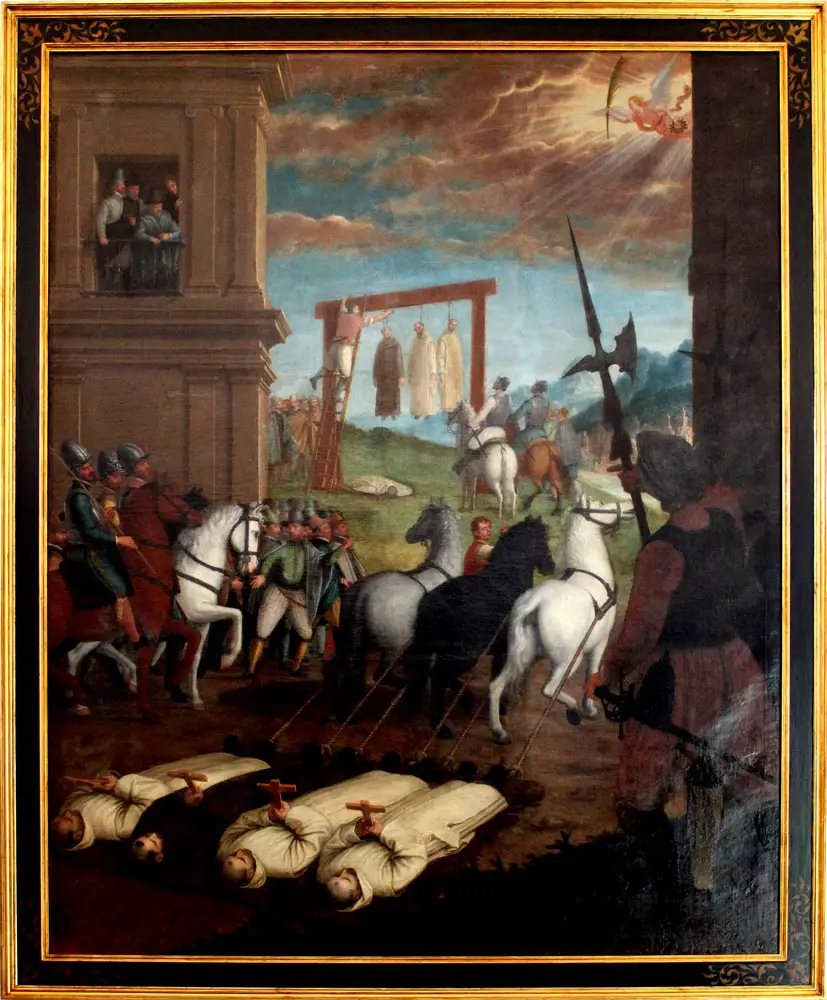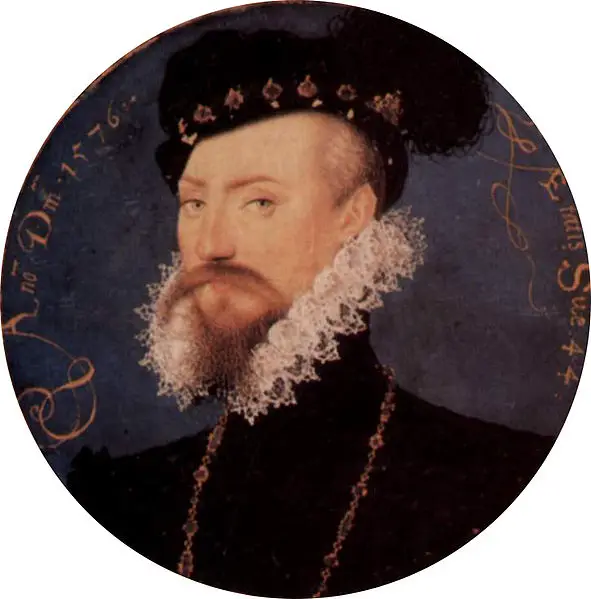The purpose of the meeting between these two mighty Kings was to solidify the Treaty of London. Throughout the previous year hostilities between France and Spain had been bubbling and both King Francis I and the Holy Roman Emperor, Charles V, were seeking the support, or at least the neutrality, of Henry VIII and England. The Treaty of London was signed between the major European nations including France, England, Spain, the Holy Roman Empire, the Papacy, Burgundy and the Netherlands. The Treaty stated that none of the signatories should attack one another and if they did the others would come to their aid.
While the official reasoning behind the Anglo-French meeting was to solidify the Treaty of London and strengthen relations between the two countries, it ended up being a means for each King to try and impress the other (and at times to attempt to outdo each other). Henry VIII spared no expense and sought not only to impress but to wow all the French that laid eyes upon the English.
In the months leading up to the meeting, Henry VIII ordered many expensive furnishings to be gathered, lavish clothing to be made, events to be organised and a magnificent pavilion for the King to occupy over the course of the meeting. The royal coffers paid for many of these expenses, however many of the noble men and women that attended the event would have to pay for their own expenses, including their clothing which was designed to impress. Those that participated in jousting events had to pay for their own weapons and armour. Some nobles even mortgaged their estates, sold manors and property, and even organised loans in order to have the funds to attend the magnificent Field of Cloth of Gold. Approximately 5000 men and women accompanied the King across the English Channel as well as around 3000 horses.
On Thursday 7th May Henry VIII and Francis met. In a small valley between the English held Guînes and the French Ardres the two Kings rode towards each other. Both men were clearly set on impressing one another. Henry VIII wore cloth of silver with rich jewels and white plumes, while Francis I wore cloth of gold frieze, rich jewels and a bonnet with white plumes. As the Kings approached each other they removed their bonnets and then embraced before dismounting their horses and embracing once more. They then went to an English pavilion to talk.
Over the course of the next seventeen days, various events and entertainments were held in attempt to display the skill and splendour of each country. These events included jousting, archery, wrestling, displays of singing, exotic and magnificent feats, and the exchanging of lavish and extravagant gifts. There were even two fountains which flowed with red wine! One of the most notable events of the meeting between the two countries was a wrestling match between Henry VIII and Francis I. Henry VIII challenged Francis to a wrestling match and unfortunately Francis I tripped Henry and the English King lost!
One of the most magnificent displays at the Field of Cloth of Gold was the splendid pavilion built to house Henry VIII. A design for the pavilion can be seen in Man & Monarch: Henry VIII edited by Susan Doran and David Starkey. The pavilion consists of a series of wood and canvas tents which could be separated by hangings of rich cloth to create separate rooms, including chapels and private apartments. The pavilion is shown to be made of red cloth with a fringe of gold, decorated with Tudor roses and fleur-de-lis. Upon the eaves was a frieze with the royal mottoes ‘Dieu et mon droit’ and ‘semper vavat in eterno’. On top of the pavilion poles were the models of the King’s beasts (lions, greyhounds, dragons and antelope). It has been proposed that around 6000 workers were employed to build the King’s and the other English quarters.
On June 24th the grand meeting came to an end and both Kings departed. However, before Henry VIII returned home to England he went to Gravelines to meet with the Holy Roman Emperor Charles V. A treaty of friendship was agreed between Charles V and Henry VIII and within two years England was at war with France.
A stunningly detailed oil painting upon canvas was painted to depict the Field of Cloth of Gold. The painting is now in the hands of the Royal Collection. In the left hand side of the painting Henry VIII can be seen riding towards the meeting from Guînes with members of his royal court and other servants. In the right foreground of the painting is the royal palace which was set upon brickwork and made of wood and canvas painted to look like a solid structure. In front of the palace are the two fountains which flowed wine and behind the canvas palace is the King’s golden pavilion. Behind the pavilion is a gold tent with King Francis I and King Henry VIII inside depicting their formal meeting. To the right of the painting is the tournament field which held many of the spectacular events throughout the meeting.
Click on the image to enlarge:
Sarah Bryson is the author of Mary Boleyn: In a Nutshell. She is a researcher, writer and educator who has a Bachelor of Early Childhood Education with Honours and currently works with children with disabilities. Sarah is passionate about Tudor history and has a deep interest in Mary Boleyn, Anne Boleyn, the reign of Henry VIII and the people of his court. Visiting England in 2009 furthered her passion and when she returned home she started a website, queentohistory.com, and Facebook page about Tudor history. Sarah lives in Australia, enjoys reading, writing, Tudor costume enactment and wishes to return to England one day.
Notes and Sources
- Doran, Susan (2008) The Tudor Chronicles, Quercus Publishing, London.
- 'Henry VIII: June 1520', in Letters and Papers, Foreign and Domestic, Henry VIII, Volume 3, 1519-1523, ed. J S Brewer (London, 1867), pp. 299-319 http://www.british-history.ac.uk/letters-papers-hen8/vol3/pp299-319 [accessed 9 May 2015].
- Loades, David (2011) Henry VIII, Amberley Publishing, Gloucestershire.
- ed. Doran, Susan & Starkey, David (2009) Man & Monarch: Henry VIII, The British Library, London.
- The Field of the Cloth of Gold 2015, Royal Collection Trust, viewed 11th May 2015, http://www.royalcollection.org.uk/collection/405794/the-field-of-the-cloth-of-gold
- >Wilson, Derek (2009) Henry VIII: Reformer and Tyrant, Constable & Robinson, London.





Leave a Reply